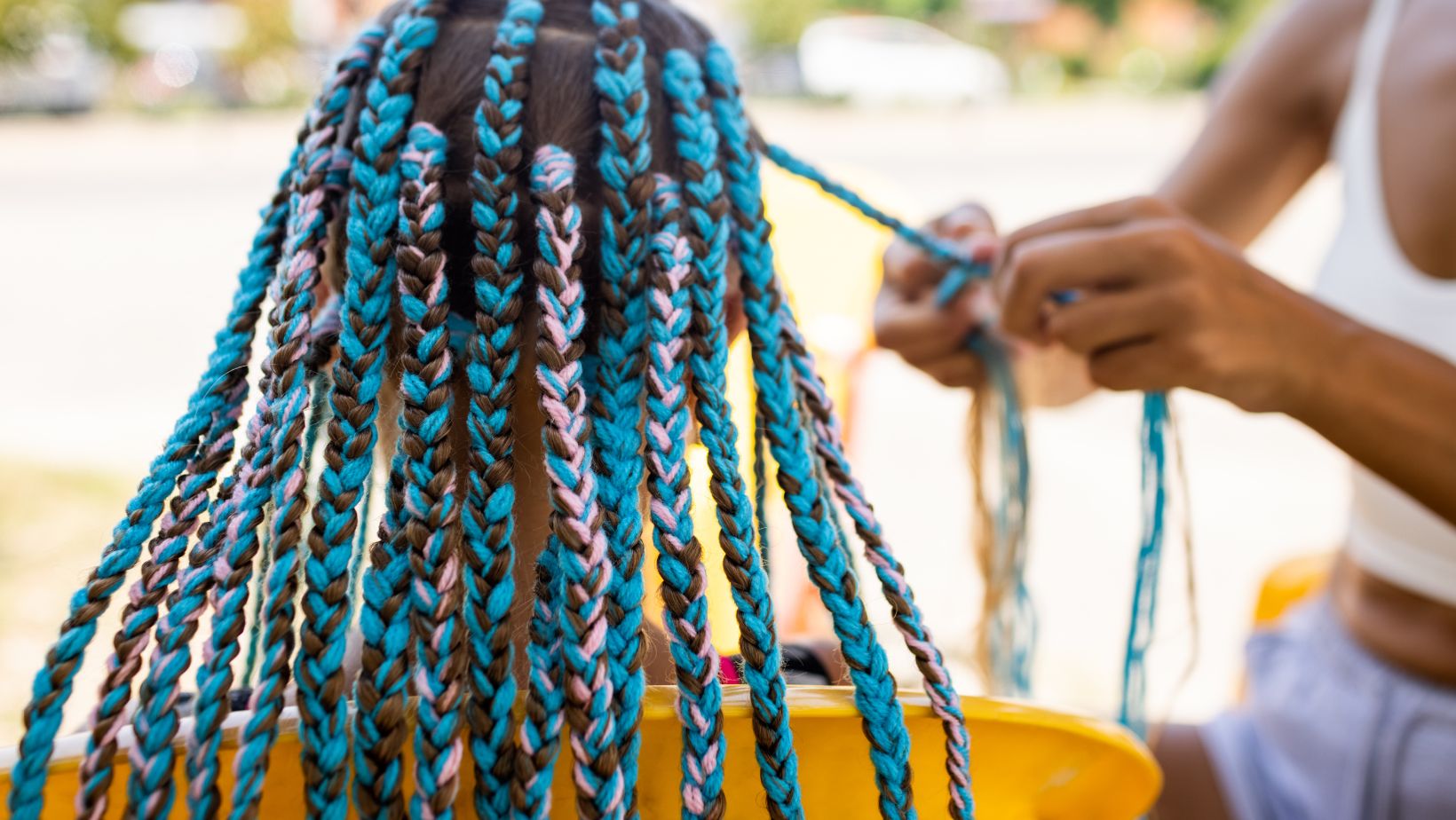A Unique Technique: Individual Braids on Natural Hair

Individual braids on natural hair are a popular protective hairstyle that many people with natural hair opt for. These braids, also known as box braids or single braids, involve sectioning the hair and then weaving extensions into each individual section. This technique not only adds length and volume to the hair but also helps to protect it from damage caused by heat styling and environmental factors.
Individual Braids on Natural Hair
When it comes to styling natural hair with individual braids, there are various factors to consider in order to achieve the desired look. Let’s delve into the different types of individual braids, considerations for natural hair, and how to choose the right size and length.
Different Types of Individual Braids
Individual braids offer versatility and can be customized to suit your personal style. Here are some popular types of individual braids:
- Box Braids: These braids are created by sectioning off small squared or rectangular sections of hair and then weaving synthetic or natural hair extensions into each section.
- Senegalese Twists: Similar to box braids, Senegalese twists involve adding extensions to your natural hair. However, they use a two-strand twisting technique instead of a three-strand braiding technique.
- Micro Braids: As the name suggests, micro braids are tiny, delicate braids that require skilled craftsmanship due to their small size.
The choice of individual braid type depends on personal preference, desired thickness, and overall look you want to achieve.
Considerations for Natural Hair
When selecting individual braids for natural hair, it’s important to take certain factors into account:
- Hair Texture: Different textures may require different approaches when it comes to choosing individual braid styles. For example, if you have tightly coiled hair, opting for box braids or Senegalese twists can help protect your strands while showcasing your unique texture.
- Hair Health: Prioritize the health of your natural hair when selecting individual braid styles. Avoid hairstyles that put excessive tension on your scalp or cause breakage.
- Lifestyle and Maintenance: Consider your lifestyle and maintenance preferences before settling on a specific type of individual braid. Some styles may require more upkeep than others.
By considering these aspects, you’ll be able to choose individual braids that complement your natural hair and suit your lifestyle.
Choosing the Right Size and Length
The size and length of your individual braids can significantly impact the overall appearance. Here are some things to consider:
- Size: Individual braids come in various thicknesses, ranging from thin to thick. Thinner braids often provide a more intricate look, while thicker braids can create a bolder statement.
- Length: Decide on the desired length for your individual braids. Whether you prefer short, medium, or long braids, ensure they align with your personal style and comfort.
Remember that larger or longer braids may require more time for installation and maintenance but can offer unique styling opportunities.

Step-by-Step Guide to Installing Individual Braids on Natural Hair
Preparing Your Hair for Individual Braids
Before diving into the process of installing individual braids on natural hair, it’s crucial to properly prepare your locks. Here are a few steps to ensure optimal results:
- Detangle and cleanse: Begin by gently detangling your hair using a wide-tooth comb or your fingers. This helps remove any knots or tangles that might hinder the braiding process. Next, cleanse your hair with a moisturizing shampoo to eliminate any product buildup or dirt.
- Deep condition and moisturize: After cleansing, apply a deep conditioner throughout your hair and leave it on for the recommended time. This step helps restore moisture and strengthen your strands before braiding.
- Trim split ends: If you notice any split ends or damaged hair during the preparation stage, consider trimming them off. This promotes healthy growth and prevents further breakage.
- Stretching options: Depending on your preference and hair type, you may choose to stretch your natural hair before braiding to achieve different looks or make the installation easier. Stretching methods include blow-drying with low heat, banding, African threading, or twist-outs.
By following these preparatory steps, you’ll ensure that your natural hair is in its best possible condition for individual braid installation.
Remember to listen to your hair’s needs and adjust your routine accordingly. So go ahead and rock those stunning braids with confidence!
What's Your Reaction?
Justin is a promoter of healthy living and a cook with a passion for making delicious food. He has worked in many different kitchens, but his true love is creating healthy meals that taste great. Justin also enjoys staying active, and loves spending time outdoors hiking or biking. He is always up for trying new things, and he loves to laugh and have fun.



